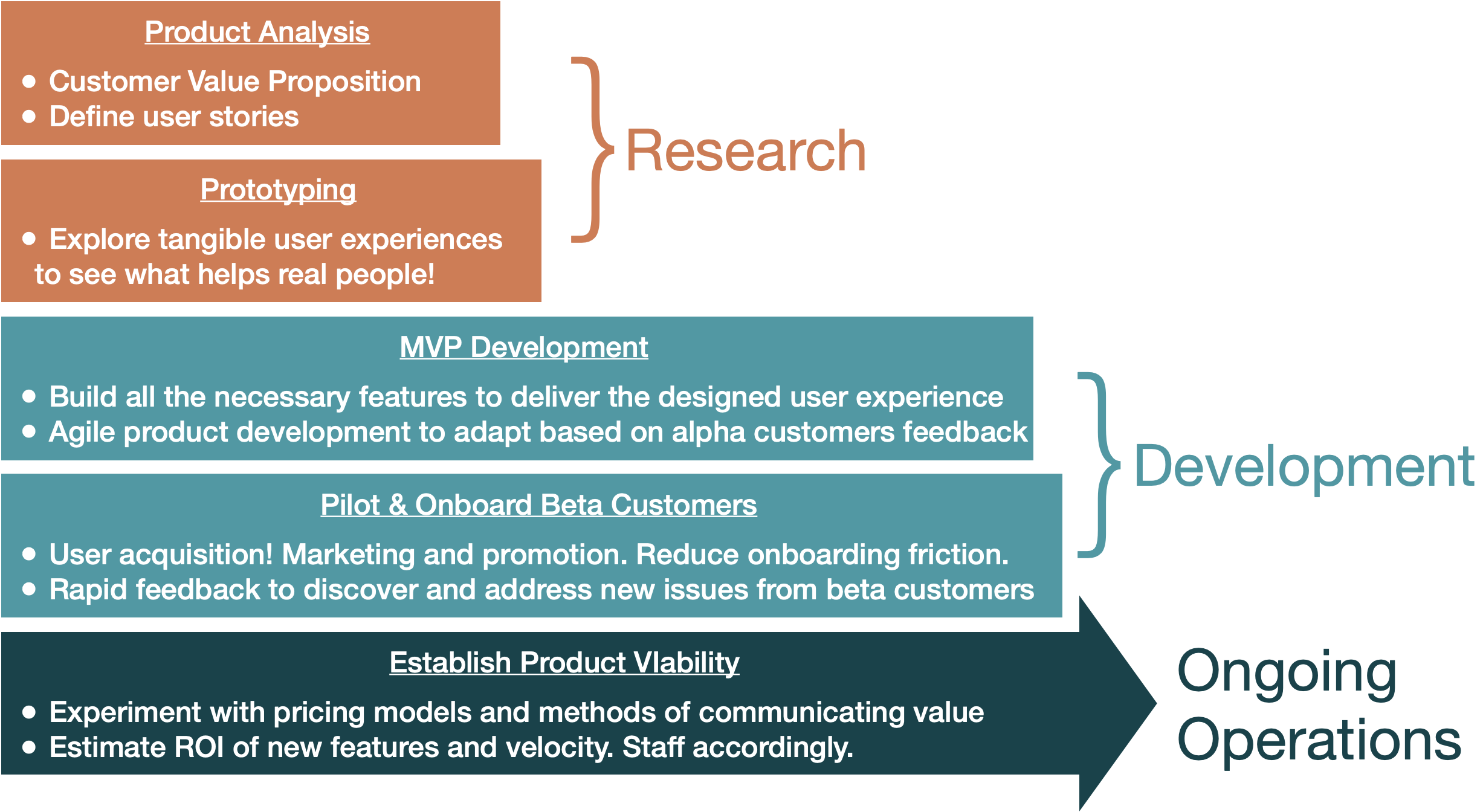Why Prototype?
Prototyping: The Highest Leverage Research Activity
The figure below depicts the key activities involved in Research & Development. If we think of the horizontal bars as the amount of effort and investment that it takes to complete one of these phases, you can see that the effort to develop a minimum viable product is significantly more than research and evaluating what to build.
Figure 1: For A Given Product, R&D Activities That Lead Into Steady State Operations
If Product Analysis is the research activity that creates reports, slides, and summaries, then Prototyping is the research activity that creates something tangible that real users can interact with. The cost of developing the wrong product is significantly higher than building and learning from interactions with multiple tangible prototypes.
Everything that a company sells was once created by enterprising and creative individuals through the product R&D process. Years later, perhaps all that remains is the ongoing operation to service the product. The product R&D process itself may have faded into distant memory. Still, it is important to remind ourselves of the activities that make up early research and development. Early insights and lessons there can help us avoid developing something that has feasibility, desirability, or viability issues.
A Journey Through Prototyping Projects
To make sure we build the right products, our Data Product R&D team first spends time with your customers and community members to get to know their needs, pains, and desires. Thanks to the hours we spend with them, we are able to define customer value propositions for a portfolio of product ideas. We then solicit insights from leaders, executives, and directors and prepare that information to support the Chief Product Officer's decision for what to work on each quarter.
We then design and compare multiple user experiences and develop prototypes of your products.
Summary: Key Benefits of Prototyping
Prototyping reduces or eliminates concerns about feasibility. When we first started prototyping, we often asked ourselves if AACSB's data has the ability to power new solutions. We know it's possible now, and everyone who sees the prototypes in action knows it too.
Prototyping can be used to gather key insight about the user experience and improve its design in ways that slides or reports simply cannot. Nothing compares to the quality of feedback that is available when someone interacts with a tangible, interactive prototype for the first time.
Prototyping minimizes the number of failed attempts at building the wrong product and saves companies from wasted investments in developing something that no one wants.

